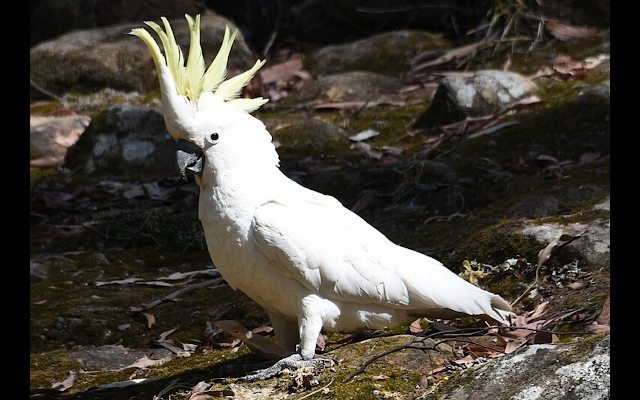20 interesting facts about Sulphur-Crested Cockatoos:
The Sulphur-Crested Cockatoo (Cacatua galerita) is a large species of parrot found in Australia, New Guinea, and Indonesia.
They are named for the bright yellow crest of feathers on their head, which they can raise and lower at will.
Sulphur-Crested Cockatoos can grow up to 50 cm (20 in) in length and weigh up to 1 kg (2.2 lb).
They have white plumage, with yellow feathers on their crest, under their wings, and on their tail.
Sulphur-Crested Cockatoos are highly intelligent and social birds, known for their ability to mimic human speech and perform tricks.
They are often kept as pets, but require a lot of attention and care due to their high level of intelligence and social nature.
In the wild, Sulphur-Crested Cockatoos live in large flocks, which can number in the hundreds.
They are diurnal, meaning they are active during the day and sleep at night.
Sulphur-Crested Cockatoos feed on a variety of foods, including seeds, nuts, fruits, and insects.
They have strong beaks that they use to crack open nuts and seeds.
Sulphur-Crested Cockatoos are known for their loud and raucous calls, which can be heard from a long distance.
They have a lifespan of up to 80 years in captivity, making them one of the longest-lived species of parrot.
Sulphur-Crested Cockatoos are monogamous, and pair up for life.
They breed during the Australian summer months, building nests in tree cavities or other protected areas.
The female lays two to three eggs, which she incubates for around 30 days.
Both parents care for the young, which fledge at around 12 weeks of age.
Sulphur-Crested Cockatoos are susceptible to psittacine beak and feather disease, a viral infection that can cause feather loss and beak deformities.
They are also threatened by habitat loss and poaching for the pet trade.
In some areas, Sulphur-Crested Cockatoos are considered pests due to their destructive feeding habits.
They are an important part of the ecosystem, helping to disperse seeds and pollinate flowers in their native habitats.





0 Comments